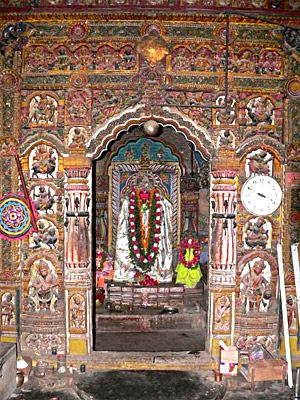 The town and notified area committee of Buguda is exactly located at 19.82° N and 84.8° E in the Ganjam district of Orissa. It is situated in Ghumusara province. The average elevation of the town is 84 metres (275 feet). Demographically speaking, the population of the town is 13,253 (in accordance with the 2001 census), with 51% males, 49% females and 14% children less than 6 years of age. While the national average literacy rate is 59.5%, the towns own mean literacy rate is considerably higher at 67%. The male and the female literacy is respectively 76% and 58%. The important places of tourist interest in this town are the Biranchi Narayan Temple (2nd Sun Temple after Konark made of wood and the temple is a chariot) and the Jagannath Temple. The other nearby attractions are Budhokhol (about 3 kms away from Buguda), Shinghasini (around 20 kms from Buguda, a domestic picnic spot adorned with wild flowers and luxuriant forests) and Bhetanai (on the way from Aska to Buguda). The fairs and festivals associated with this town include Maghasaptami, Samba Dashami, Rath yatra, Danda Yatra (April), Durga Puja and Kalipuja.
The town and notified area committee of Buguda is exactly located at 19.82° N and 84.8° E in the Ganjam district of Orissa. It is situated in Ghumusara province. The average elevation of the town is 84 metres (275 feet). Demographically speaking, the population of the town is 13,253 (in accordance with the 2001 census), with 51% males, 49% females and 14% children less than 6 years of age. While the national average literacy rate is 59.5%, the towns own mean literacy rate is considerably higher at 67%. The male and the female literacy is respectively 76% and 58%. The important places of tourist interest in this town are the Biranchi Narayan Temple (2nd Sun Temple after Konark made of wood and the temple is a chariot) and the Jagannath Temple. The other nearby attractions are Budhokhol (about 3 kms away from Buguda), Shinghasini (around 20 kms from Buguda, a domestic picnic spot adorned with wild flowers and luxuriant forests) and Bhetanai (on the way from Aska to Buguda). The fairs and festivals associated with this town include Maghasaptami, Samba Dashami, Rath yatra, Danda Yatra (April), Durga Puja and Kalipuja.
One of the notable attractions of the town of Buguda is the wall painting of the temple of Biranchi Narayan devoted to the epic of Ramayana. This temple was constructed in the 1820s by a distant relative of Upendra Bhanja, Srikara Bhanja. The murals of this temple date back to the 1820s. Sri Rajendra Prasad Tripathy, a famous historian is based here. He is the author of "Kastha Konark", and "Budhokhol". Sri Tripathy was awarded the "UPARASTRAPATI PURASKAR" for his commitment to social devlopemenmts in this region.



















